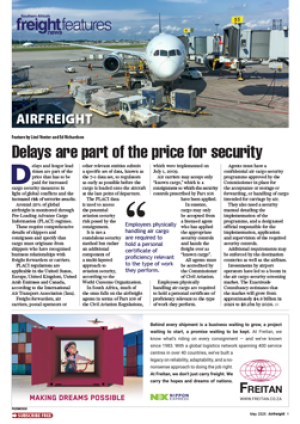In a region where logistics
is shaped by thousands of
years of shifting political
and economic landscapes,
bilateral trade has grown from
US$1 billion in 1995 to $45bn
by 2011, according to the
African Development Bank.
By 2014, bilateral trade is
anticipated to climb to more
than US$75 billion.
India is the main exporter
to the region’s two biggest
economies – Tanzania and
Kenya, followed by China.
A policy of “looking East”
away from the European
trading links established by da
Gama and subsequent colonial
rulers has seen a revival in
Chinese trade
with East
Africa.
China
established
diplomatic
relations with
Kenya in 1963.
Bilateral trade
was worth
around US$2.8
bn in 2013.
However,
China now
has a new
competitor – in
the form of the
United States.
In May 2014 the Kenya
National Bureau of Statistics
(KNBS) reported that the
United States had overtaken
China to become Kenya’s
second-largest source of
imports.
The value of US exports to
Kenya rose to around US410m
in May compared to China’s
US$24m, according to KNBS
data.
Kenyan exports to the
United States totalled
US$410m in May.
The region’s history has
been one of ongoing conflict
and territorial disputes.
European nations formally
colonised most of the
countries in the region during
the 1881-1914 “Scramble for
Africa”.
Trade ties
therefore
remain strong,
with the
Netherlands
and United
Kingdom
being in the
top five export
destinations for
Kenyan goods.
The UK
is also listed
among the top
five exporters
to Kenya. The
list includes
India, China, South Africa,
and Japan – with Japan
potentially being replaced
by the US if the May trend
continues.
But East Africa
remains in the news
more for conflict than
economic success.
Mozambique’s
civil war is
currently
threatening
to reignite in
the northern
provinces.
However
logistics
companies – dating
back to the early
traders in dhows and
sailing ships – will
find ways to keep freight
moving.
A new scramble for East
Africa has been ignited by
significant oil and gas finds
in Kenya, Mozambique,
Tanzania and Uganda.
“It is important to bear
in mind that East Africa
remains one of the world’s
poorest, least developed
regions,” says Bill Page in
the introduction to the 2013
Deloitte Guide to Oil and Gas
in East Africa.
“Low levels of development
are also reflected in an
inadequate and poorly
maintained infrastructure.
The development of oil
and gas will provide a
major stimulus to the local
economies and will require
extensive upgrading of the
existing infrastructure,” he
says.
This is happening,
with multi-billion dollar
investments in port, road and
rail infrastructure throughout
the region.
The infrastructure will help
boost agriculture and revive the
region’s manufacturing sector –
which some economists believe
will compete against China and
India in the medium term.
And logistics companies
will be there to help the
freight move.
INSERT
The development
of oil and gas will
provide a major
stimulus to the
local economies
and will require
extensive upgrading
of the existing
infrastructure.

